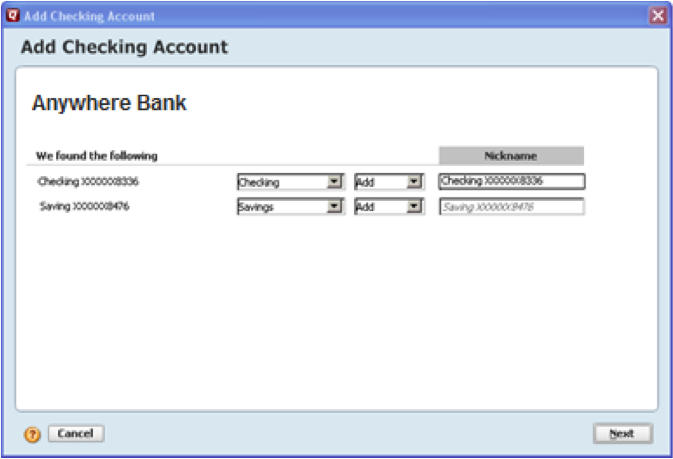

- #QUICKEN 2015 HOME AND BUSINESS TUTORIAL DOWNLOAD#
- #QUICKEN 2015 HOME AND BUSINESS TUTORIAL WINDOWS#
Once the QIF file is imported, go to the IMPORT account register. For Quicken 2015, you must select the "IMPORT" account, not "All accounts". In this case, the account NAME is entered in CSV2QIF. The MAIN difference from the guide for Quicken 2014 or earlier is to select "All accounts" from the drop-down list. Select File, then Import, then, QIF file under the main menu.

Import the QIF file into the IMPORT account Select all transactions and cut and paste them under other "final" accountįor Quicken 2015, you must create a CASH IMPORT account, since the cash type is an only account type that will import QIF files.Ĭall the account "IMPORT" or something else standing out for as a special account for imports.Įnter the account balance (the screenshot below shows just click "next", but as I'm writing this I realized that BY ENTERING ACCOUNT BALANCE, YOU WILL NOT HAVE EXTRA BALANCE TRANSACTION CREATED that you see below on screenshots). Import transactions into a "buffer" or "import" account to review imported transactions in isolated a place.

Many of our users use "buffer" or "import" account approach to import transactions: Select the QIF target as "Quicken 2015".Ĭlick the 'Convert' button to create a QIF file. Start CSV2QIF and load a CSV/Excel/TXT file. IMPORTANT: CSV2QIF is now replaced with the Transactions app, which converts from more formats and converts to more formats.
#QUICKEN 2015 HOME AND BUSINESS TUTORIAL DOWNLOAD#
Download it from the CSV2QIF download page. Make sure you are using the latest version of CSV2QIF. Move transactions under bank or credit card account Use the latest CSV2QIF to create the expected QIFĬreate an IMPORT cash account in Quicken as a place to import (Note: As another option, you can switch from QIF to QFX, but you won't be able to import categories as the QFX format does not support them.) Three easy steps to Import CSV into Quicken 2015 There is a trick to see those transactions and get them into the register, but it is much more time-consuming than a simple way to convert and import CSV into Quicken 2015 with categories shown below. When you import a "correct" QIF file into Quicken 2015, 2016 (with the account header part) that imports fine into Quicken 2017, 2014, 2013, 2012, 2011, 2010, 2009, 2008, 2007, 2006, 2005, you will see a message that transactions are imported, but you will not see the transactions when you open the account. Before Quicken 2015, Quicken 2014 and earlier versions imported "correctly" prepared QIF files even if Quicken "stopped" officially importing QIF files for non-cash accounts since Quicken 2005. Quicken 2015 (pre Quicken ID releases) changed the QIF import process into non-cash accounts (Quicken 2016 did the same and Quicken 2017 finally fixed it). Proceed to the tutorial(s) for Quicken 2017. Your Quicken no longer imports transactions from your bank, so the "online services" connection is useless anyway.Įdit Quicken account and click Online Services and click Deactivate and save the changes. This is important to have Quicken 2015-2016 import QIF files the same way Quicken 2017 works.
#QUICKEN 2015 HOME AND BUSINESS TUTORIAL WINDOWS#
Updated Quicken 20 have the issue fixed the same way as Quicken 2017 with one exception:įor Quicken 2015-2016 for Windows with the latest 2019 update, make sure to disconnect the Quicken account from online services. IMPORTANT: This is an outdated tutorial, but still relevant if you are still using Quicken 2015 or Quicken 2016 before it was switched to a new Quicken ID.


 0 kommentar(er)
0 kommentar(er)
